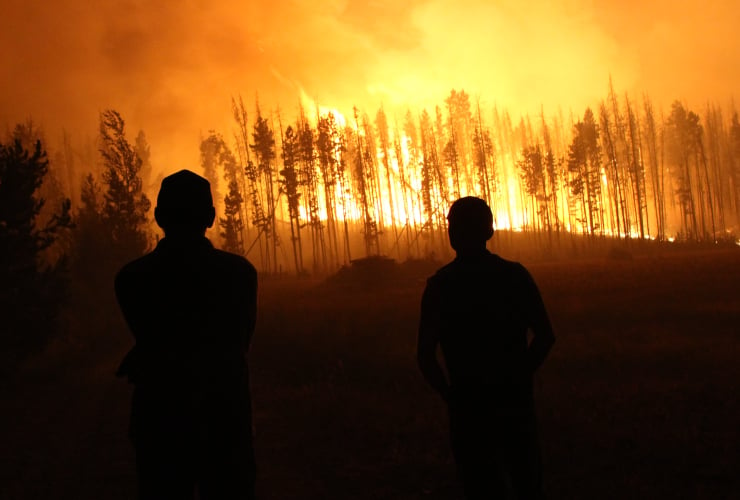CRAZY RICH ASIANS: Much has been written about the socio-cultural importance of this movie. You know the first major Hollywood film in 25 years with an all-Asian cast. That’s significant, I’m sure, though not surprising. China is now such a key market for the American film industry that making this one doesn’t seem like that much of a gamble; more probably a natural evolution playing to where the money is. Add in that it’s from a very popular book—the first of a trilogy—and you can appreciate why some screenings have already been selling out since it opened on Wednesday. There’s even a clip in the end credits that seems to be pointing to a sequel. But enough of this background. How is it as a movie?

Very good, I say. This is a colourful, glitzy romantic comedy like Hollywood used to make decades ago. It’s got stock character types and standard story lines but they feel new and there’s a bounce in how they come at us. The actors and the settings—in an ultra-opulent society of Chinese in Singapore—are beautiful. The central predicament is about the demands of family and at times that reminded me of some Bollywood movies.

A developer’s son, who has run away to New York, returns with his girlfriend for a friend’s wedding. It’s a sort of culture shock for her. He had neglected to tell her that his people are super-rich and that he’s under pressure to take on running the business eventually. His mother digs up some dirt about the girlfriend’s family and sneers “You are not our own kind of people. You are a foreigner.” So how can that romance survive? Call in some familiar rom-com solutions, pop a large cast of side characters into and out of the story and you’ve got a bright, cheery confection of a movie. The couple are played by Constance Wu, known for playing an immigrant on TV, and Henry Golding, new to movies after hosting a travel show in England. Best known in the cast, unless you count the rapper Awkwafina (very funny), are Michelle Yeoh (Crouching Tiger, Hidden Dragon) suitably icy as the mom and Ken Jeong (the Hangover films) jarringly crass as her friend's dad. The film revels in a dream world of luxury goods (1.2 million dollar earrings?) and extravagant parties (“all-paid shopping spree”) without questioning any of it. Too true, of this class. 4 out of 5
ALPHA: Here’s one for young boys (and girls) who can forget about super heroes for a while and connect to what life must have been like back in pre-historic times. 20,000 years ago, in Europe, the words on the screen say. A small tribe of hunters is stalking a herd of bison. They drive them off a cliff (a spectacular sight in 3-D) and have meat to roast over their bonfire at night. The film does a very good job of imagining this primitive existence, including the fear that was always there about creatures out beyond the light of the fire. It was filmed mostly here in Vancouver and in area parks like Golden Ears with side trips to Alberta and Iceland. It’s a beautiful-looking movie with an intimate but predictable story at the centre.

The chief’s son (Kodi Smit-McPhee) who, according to his mom “leads with his heart not his spear,” has to learn the lessons of his father: that people have to kill animals to have food to eat. He’s thrust into a long survival adventure where he learns it. A bison pushes him off a cliff; he clings to a ledge, drops into a river, gets to shore and tries to find a way home. He’s injured, almost kills a wolf and instead of finishing him off, helps him heal. The two become allies on the rest of the trip. The film by American director Allen Hughes is being promoted as a heart-warming story about the original domestification of a wolf into man’s best friend. I think the harsh lives of primitives in a tough landscape is the better focus. It’s imparted with real feeling, severe tension at times and imagination. There’s wonderful a sequence when the camera swoops over the land, along a river and up a valley to show you the big empty land. And in aid of authenticity, all the characters speak only a made-up language (we get subtitles). 3 ½ out of 5
WALL: No not Trump’s, although you might be moved to think about it a few times as you watch. This is the one Israel built to separate itself from the Palestinians. Over 700 kilometers, costing $4 billion to build and ever controversial, the wall was the subject of a one-man play, a monologue really, by the English writer David Hare. Now it’s a film from the National Film Board and director Cam Christiansen in Calgary. Again, it’s David Hare doing the talking but the format is far different.

Instead of just quoting various thinkers and analysts on the Middle East, Hare drives from Tel Aviv, to Jerusalem, to Nablus and other locations to speak to many in person, sometimes in groups. The trip, the discussions and the comments were filmed and then animated. Until a few bits of color at the end, they’re in black and white, pretty well reflecting the stark story they tell. Hare tries to be balanced but can’t help leaning in his comments. He’s got strong scenes at border checkpoints, nuisance examples the Palestinians live with and a full dialogue on why Israel seems so strong but feels so weak. There’s much to think about in this one. And here’s a fact I learned from it: Ramallah is safe because it’s the only city around there not mentioned in the Bible and that means religious zealots aren’t interested in it. 4 out of 5
CIELO: Most of us don’t spend too much time watching the sky. We’re too busy or there’s too much light pollution in our cities. Alison McAlpine from Toronto invites us to rediscover the joy and peace in looking at the heavens with this film about people doing exactly that. She finds them in one of the best places on earth for star gazing, the Atacama Desert in Chile. There’s a famous observatory where she meets scientists looking for new planets and pondering the real nature of the universe. We only see a bit of it, one says, like an ant able to comprehend only a small part of the world when it comes out of a hole in the ground.

In the countryside around, Alison meets cowboys, miners and farmers who talk about the delight they feel watching the night sky. Remarkably, there are still people who build entire mythologies on what they see, just like ancient people did. One, whose daughter has died, imagines she’s now a star up in the sky watching him from above. A young man tells of apparitions he sees; another wonders if there are other beings out there but unwilling to come down because they think we’re evil. McAlpine has poetry and theatre in her background and there’s a lot of that same sensibility in this, her first feature. Her questions aren’t strong, but the responses she gets are. And the dramatic images are, the sky moving in time lapse photography, dust falling like rain or planets imagined and enhanced with visual effects. 3 ½ out of 5
NICO, 1988: That would be about 20 years after Andy Warhol made her a star and not long before she died on a visit to the son she had neglected. From The Velvet Underground to Ibiza, a highs-and-lows packed life but I’m a bit at a loss as to why this film was made. Sure she was a star and she had demons inside and what we see is based on memories shared by old friends and associates. But the film cautions that there were so many changes made that it is “not to be viewed as factually accurate.” The best we can imagine then is it’s an impression. Played by actors and directed by Susanna Nicchiarelli in Italy.

The picture is potent and sad. She was a beautiful model, came to hate her beauty and turned into, as she said it, a fat junkie. Danish actor Trine Dyrholm does a mesmerizing portrayal of her out on her last tour, including singing her songs, old and new. She argues with her handlers, yells at her band, gets annoyed with interviewers who persist in asking about her Nico days (her real name was Christa Päffgen, German). She was haunted by memories of the war, the destruction of Berlin, the lies she told about her father and her failure as a mother. All that comes out brilliantly in the film, if you’re interested. It’s truthful and affecting but also gloomy. So too with Dyrholm’s singing. Some is flat and tortured; a song in Prague is joyous and pumping (until the police shut it down). Apparently, Christa had both sides. 3 out of 5
MILE 22: This may be the most violent film of the summer, possibly the year. You get to see several point-blank gun shots to the head and a couple of glass-shard stabbings to the face. Or this innovation: pulling a guy’s chin along the shattered glass of a car’s broken window. If there were some reason for these things, I’d say, OK. But I couldn’t find one, except as another opportunity –the 4th—for Mark Wahlberg and director Peter Berg to work together. They’ve settled into an average action movie style and messed up a lot of it.

Wahlberg plays a CIA guy in a South-East Asian country given the job of figuring out the bona fides of an “asset”. That’s a guy offering to share some sensitive information (possibly about terrorists and nuclear material) but only if he’s taken out of the country and given asylum in the US. The mystery is still there when Wahlberg starts to take him to the airport. That’s 22 miles away, if you care, and that’s where the bad guys attack, chase, shoot and generally try to intervene. It’s a promising idea for an action film, but this one is foiled by bad editing, staging and confusion. And in one extended sequence, apparent copying of a couple of Indonesian movies, called The Raid. They did it better. Iko Uwais, who starred in them, plays the “asset” here and also choreographed the fights. Lesser results, though. We don’t care about the characters including the sarcastic jerk Wahlberg plays or his cohort (Lauren Cohan) who, when she’s not in physical danger, is on the phone arguing child custody with an ex-husband. 2 out of 5
Crazy Rich Asians: 4 stars
Alpha: 3
Wall: 4
Cielo: 3 ½
Nico: 3
Mile 22: 2






Comments